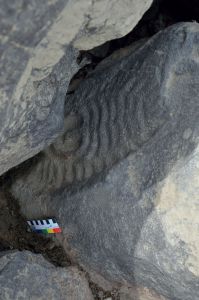 Artur R. Laskin1,*, Ekaterina G. Devlet1, Yuriy M. Svoyskiy2,**, Ekaterina V. Romanenko2,***, Elena S. Levanova1,****
Artur R. Laskin1,*, Ekaterina G. Devlet1, Yuriy M. Svoyskiy2,**, Ekaterina V. Romanenko2,***, Elena S. Levanova1,****
1Institute of Archaeology R AS, Moscow, Russia
2RSSDA Laboratory, Moscow, Russia
*E-mal: archaeology@inbox.ru
**E-mail: rutil28@gmail.com
***E-mal: ekaterina.romanenko@gmail.com
****E-mal: maraveriza@gmail.com
Keywords: Far East, the Amur-Ussuri province of rock art, Sikachi-Alyan, rock art, petroglyphs, anthropomorphic face masks, zoomorphic figures.
The article presents the results of a study of Sikachi-Alyan petroglyphs. Currently, about 440 images on 125 basalt boulders and vertical planes of rock outcrops are available for study. Annually, data on the quantitative composition of Sikachi-Alyan petroglyphs change. On the one hand, this process shows a negative dynamic as the harsh natural conditions, especially, the spring ice drifts and the high water level in the Amur have a significant impact on the condition of the site conservation. On the other hand, annual studies, including those during rare periods of water recession to negative values, only for the last 15 years allowed revealing new images on 20 boulders in points 1 and 2 of the Sikachi-Alyan petroglyphic complex. Found in 2016–2018, anthropomorphic and zoomorphic rock images made on individual basalt boulders in the Amur coastal zone have substantially replenished the corpus of petroglyphs of the Amur-Ussuri rock art province in the Russian Far East.
DOI: 10.31857/S086960630005676-2







